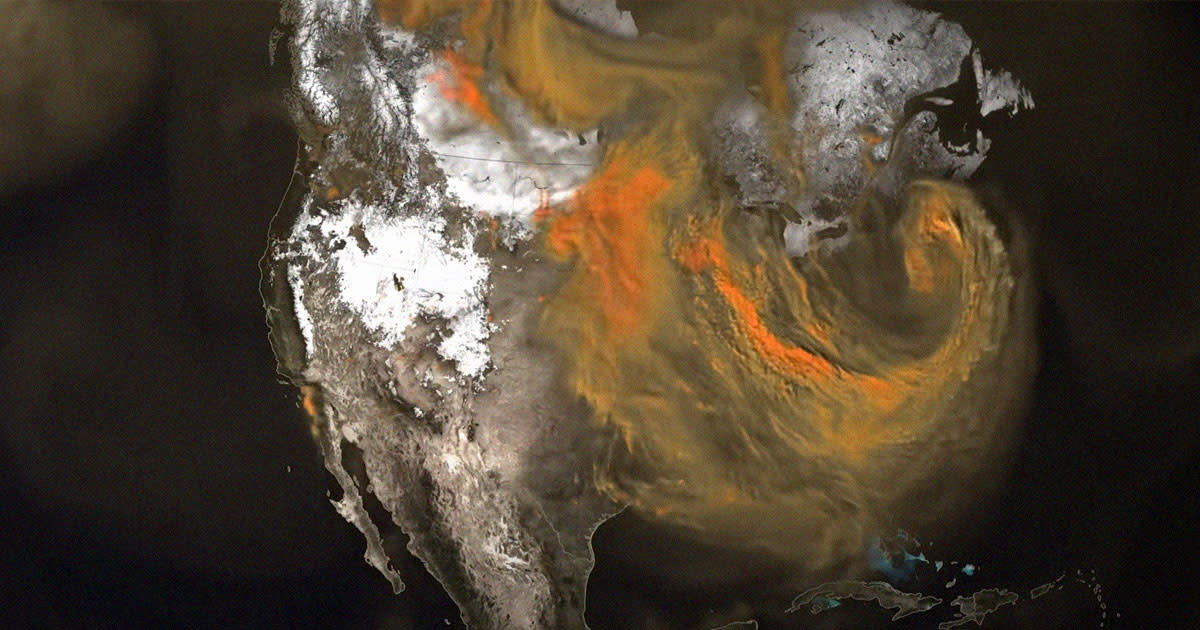Terrifying NASA Video Shows America Spewing CO2 Into Atmosphere

Car Bon Pain
NASA has released a new visualization that shows copious amounts of carbon dioxide wafting off the Earth and swirling through the atmosphere.
The video shows how concentrations of the gas move across the planet, driven by wind and atmospheric circulation, from January through March 2020. The United States, in particular, stands out as a major source of emissions. In 2021, the US accounted for over 12 percent of global emissions, only outdone by China, which accounted for just under 33 percent.
The level of detail of the visualization is truly astonishing, allowing us to "zoom in and see carbon dioxide emissions rising from power plants, fires, and cities, then spreading across continents and oceans," according to NASA.
Besides identifying major sources of greenhouse gases that are contributing to human-driven climate change, scientists are hoping to use the data to study how these various sources interact.
"As policymakers and as scientists, we're trying to account for where carbon comes from and how that impacts the planet," said NASA’s Goddard Space Flight Center climate scientist Lesley Ott in a statement. "You see here how everything is interconnected by these different weather patterns."
Model Society
Unsurprisingly, human-driven activities remain a significant source of CO2 emissions in the US and China, including heavy industries, power plants, cars, and trucks. In Africa and South America, controlled fires used for land management and deforestation are a major contributor, according to NASA.
The visualization shows CO2 emissions pulse in a mesmerizing pattern, the result of fires dying down and flaring up depending on the time of day. Plants and trees are also responsible for the visual effect, absorbing and releasing CO2 as they photosynthesize.
NASA used a supercomputer-powered model called the Goddard Earth Observing System (GEOS) to create the visualization. The weather model's resolution is "more than 100 times greater than a typical weather model," according to the agency.
And that's giving scientists an unprecedented look.
"We had this opportunity to say: can we tag along and see what really high-resolution CO2 looks like," Ott said. "We had a feeling we were going to see plume structures and things that we've never been able to see when we do these coarser resolution simulations."
"Just seeing how persistent the plumes were and the interaction of the plumes with weather systems, it was tremendous," she added.
More on CO2 emissions: Scientists Discover the Villains Destroying the Planet

